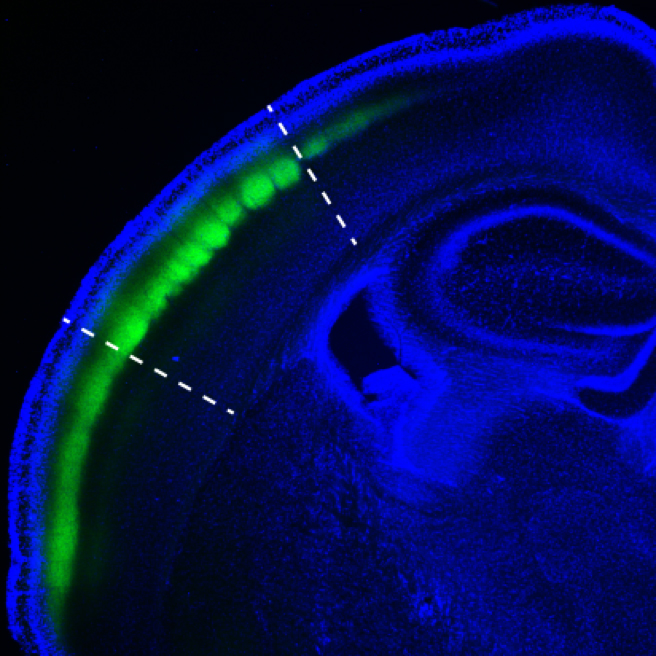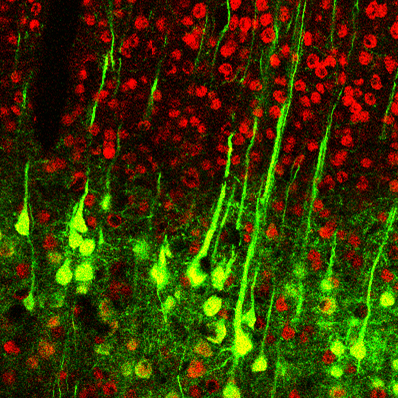NEW YORK — Imagine waking up in the middle of the night to your phone buzzing. Your fingertips, feeling around in the dark, somehow recognize the device on your nightstand, distinguishing it from other objects by touch alone.
To explore how we accomplish sensory feats like this, neuroscientists at Columbia’s Zuckerman Institute studied, using a novel quantitative approach, how mice use their whiskers to feel the shapes of things. The researchers discovered that the brain reconfigures itself dramatically when identifying objects by touch.
This surprising mental agility, described July 21 in Neuron, challenges the traditional view that brain cells have fairly fixed roles in controlling the body.
“Our research is helping to reveal how the brain experiences the world and makes decisions in connection with the body,” said first author on the paper Chris Rodgers, PhD, an associate research scientist in the Department of Neuroscience at Columbia’s Zuckerman Institute. In 2022, Dr. Rodgers will be starting his own lab as a new Assistant Professor at Emory University.
In addition to bolstering our knowledge about the link between our brains and our bodies, the discovery could inform the design of prosthetic limbs with a sense of touch. It could also help further our understanding of disorders such autism, one of the earliest signs of which is an infant having difficulty reaching out and grasping their toys.
“This work could be important for autism,” said Dr. Rodgers. “We often think of autism as being a social disorder, but it also changes how the brain moves the body and explores its environment.”
Whisking with Intent
Most mammals — from our pet cats and dogs to giraffes and whales in the wild — have whiskers. But rodents are one of the few creatures, including marine mammals such as seals, that actively move their whiskers around. Mice use these specialized hairs like fingers to touch their environment with purpose. They rely on whiskers to find their way around and recognize objects, such as food and the other mice they interact with.
Investigating this whisker touch, one of the most important senses for a mouse, is a precise way to explore how the brain controls the body and processes sensory information.
Though scientists have been studying whiskers for almost a century, and how the brain responds to whisker input for over fifty years, they have only just begun to understand how the brain uses this information to identify objects. Early studies with rodents and shrews focused on how animals used whiskers to detect the presence of an object or its texture. More complex features, like shape, have not received much attention.
“Before our experiments, very little was known about how whiskers are used to perceive shape,” said Dr. Rodgers.
Giving Shape to Thought
For the new experiments, Dr. Rodgers explored whether or not mice could distinguish the shapes of different curved objects. He found that the animals could learn to lick to the right when feeling surfaces that were convex (like the outside of a ball) and to the left for surfaces that were concave (like the inside of a bowl). A high-speed video camera recorded the movements of the whiskers as the mice made their choices.
To figure out what the whiskers were doing to inform these choices, the team led by Dr. Rodgers identified more than two dozen different ways to measure whiskers: from the angle of contact made by a hair to the force with which it bent to the time at which it made contact. The researchers then trained an artificial intelligence, a machine learning algorithm, to use these properties, as captured in the video recordings, and try to make the same choices as the mice.
“We found that our algorithm could discern shape using a very simple strategy,” said Dr. Rodgers. “All that mattered in the end was which whiskers were touching and which whiskers were not touching.”
Inside the Barrel Cortex
The scientists wanted to know how the brain made sense of these whisker contacts. So they monitored the barrel cortex region. This specialized structure in the rodent brain contains groups of cells. Each group is usually sensitive to a particular whisker, typically responding strongest when that whisker makes contact.
When mice lightly tapped their whiskers against an object and identified its shape, the behavior of the neuronal cells changed. Neurons that normally responded to one whisker could suddenly respond to a different whisker instead. The cells were retasked to concentrate on the most important whiskers in the moment. The brain, it seemed, had decided to divert its resources and remap itself to focus on what was most important.
Scientists know that the brain can change dramatically in response to damage. If someone loses hearing in one ear, for instance, the cells that normally monitor that ear will, over time, be tasked to other purposes. But seeing this shift in a healthy animal behaving normally was surprising, especially in the barrel cortex, which is thought to simply collect information from the whiskers and pass it on to higher regions of the brain for processing.
Such observations, which suggest a greater role for sensory areas in decision-making, help us to answer fundamental questions about our perceptions and the choices we make every day.
“Our brains aren’t just sitting passively in a vacuum, passively experiencing things and making decisions,” said Dr. Rodgers. “Driven by our goals and desires, we actively explore the world by moving our bodies. Research like this helps us to understand that embodied dimension of our sensory experiences and our decisions.”
###
This paper is titled “Sensorimotor strategies and neuronal representations for shape discrimination,” and the list of authors is Chris C. Rodgers, Ramon Nogueira, B. Christina Pil, Esther A. Greeman, Jung M. Park, Y. Kate Hong, Stefano Fusi, and Randy M. Bruno. The authors would also like to thank Akash Khanna, Philip Calafati, Drew Baughman, Clay Lacefield, PhD, Richard Warren, Caroline Bollen, Brian Isett, PhD, Michael Shadlen, MD, PhD, and Anita Devineni, PhD.
Support was provided by NINDS/NIH (R01NS094659, R01NS069679, F32NS096819, and U01NS099726); NeuroNex (DBI-1707398); Northrop Grumman; the Gatsby Charitable Foundation (GAT3419); a Grossman-Kavli Scholar Award (to RB); a Kavli Institute for Brain Science postdoctoral fellowship (to CR); and a Brain & Behavior Research Foundation Young Investigator Award (to CR).
The authors declare no financial or competing interests.

